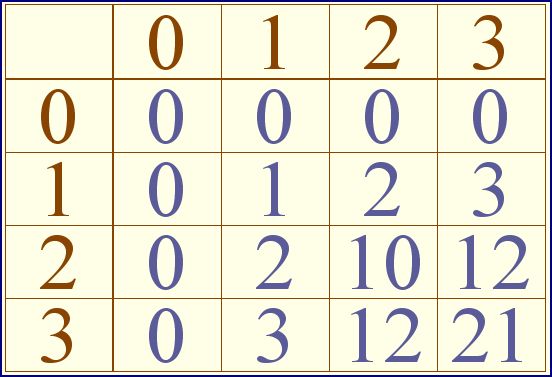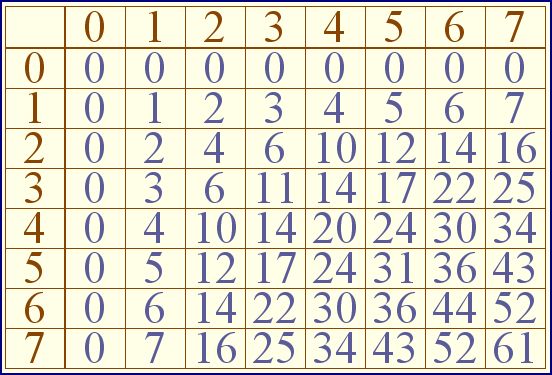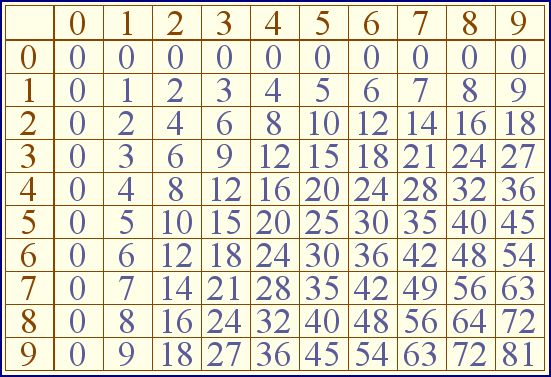Times Tables
by Andrew Boyd
Today, go forth and multiply. The University of Houston's College of Engineering presents this series about the machines that make our civilization run, and the people whose ingenuity created them.
Quick. What's two times three? Okay, that's not so bad. But what's seven times eight?
We all go through it at one time or another. Learning the dreaded times tables. They're a prerequisite for learning basic arithmetic. With ten digits — zero through nine — we have fifty-five pairs to memorize. About half are quite easy — zero times seven, one times four. But for the other half, its drill, drill, drill.
The process isn't that complicated. But it could be simpler using a different number system. One of my favorites is the unary system. To write down the number three in unary, put three ones next to each other. Five is written as a string of five ones. Pretty simple.
And here's the fun part. Multiplication in unary is easy. To calculate three times five, there's nothing to memorize. Simply place three strings of five ones next to each other. That gives a string of fifteen ones — the number fifteen in unary. Addition, subtraction, and division are just as easy. With the unary number system, we can learn all the basic arithmetic operations in just a few minutes.

So why don't we use unary numbers? For the simple reason that they take too long to write down.
With the ten digits in our decimal system, I can write down very large numbers with little effort. The age of the universe is estimated at around fourteen billion years. I can write that with just eleven digits in our decimal system. Not bad. In unary, it would take, well, fourteen billion digits.
The price we pay for our compact decimal numbers is learning our times tables. But there's no need jump from one all the way to ten digits. We can use any number of digits to build a number system.

Computers find it easiest to work with the two digits zero and one. These "binary digits" are called "bits." It takes thirty-four bits to write down the age of the universe. That's more than the eleven of our decimal system, but the computer has much simpler times tables: zero times zero, zero times one, and one times one. That's it!
It's widely believed we use ten digits because that's how many fingers we have. That's more than necessary for a good, workable number system. My preference would be for eight. But I'm just glad we weren't born with twenty fingers. I'd have never gotten through my times tables.
I'm Andy Boyd at the University of Houston, where we're interested in the way inventive minds work.
[audio: Three is a Magic Number]
For related episodes, see BIG NUMBERS and ZERO, amongst many others.
The number systems discussed in this episode are known as positional systems. Positional number systems work by choosing a base, which is equal to the number of digits in the system. The position of a digit in a string of digits corresponds to a power of the base.
For example, in our standard base ten number system, we have
52,907 (base ten) =
5 x 104 + 2 x 103 + 9 x 102 + 0 x 101 + 7 x 100.
In base eight, we have
147,253 (base eight)=
1 x 85 + 4 x 84 + 7 x 83 + 2 x 82 + 5 x 81 + 3 x 80.
Observe that both of these numbers, 52,907 (base ten) and 147,253 (base eight), represent the same quantity; they're simply expressed in two different number systems.
Times tables for the binary (base two), quaternary (base four), octal (base eight), and decimal (base ten) number systems are shown below. Observe that only a little more than half of the values in these tables need to be memorized since reversing the order of multiplication doesn't change the result (e.g., 6 x 8 = 8 x 6).
It should be noted that single digit addition tables similar to the multiplication tables are also required to master basic arithmetic, but are not discussed in this episode. Most people master these tables without too much trouble.
For additional information on positional number systems see, for example, https://en.wikipedia.org/wiki/Positional_notation.
Pictures of the times tables were clipped from the web site http://www.cut-the-knot.org/blue/SysTable.shtml.



